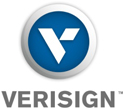Attached files
| file | filename |
|---|---|
| 8-K - FORM 8-K - VERISIGN INC/CA | d419397d8k.htm |
Exhibit 99.1

Internet Grows to More than 240 Million Domain Names
in the Second Quarter of 2012
RESTON, VA – October 2, 2012 – More than seven million domain names were added to the Internet in the second quarter of 2012, bringing the total number of registered domain names at June 30, 2012, to more than 240 million worldwide across all domains, according to the latest Domain Name Industry Brief, published by VeriSign, Inc. (NASDAQ: VRSN), the trusted provider of Internet infrastructure services for the networked world.
The increase of 7.3 million domain names globally equates to a growth rate of 3.1 percent over the first quarter of 2012, and marks the sixth straight quarter with greater than two percent growth. Worldwide registrations have grown by 25.5 million, or 11.9 percent, since the second quarter of 2011.
The .com and .net Top-Level Domains (TLDs) experienced aggregate growth in the second quarter of 2012, reaching a combined total of approximately 118.5 million domain names in the adjusted zone for .com and .net. This represents a 1.6 percent increase in the base over the first quarter of 2012 and a 7.8 percent increase over the second quarter of 2011. At June 30, 2012, the base of registered names in .com equaled 103.7 million names, while .net equaled 14.8 million names.
New .com and .net registrations totaled 8.4 million during the second quarter of 2012. This is a 4.2 percent year-over-year increase in new registrations. The .com/.net renewal rate for the second quarter of 2012 was 72.9 percent, down from 73.9 percent for the first quarter of 2012.
Verisign’s average daily Domain Name System (DNS) query load during the second quarter of 2012 was 68 billion, with a peak of 90 billion. Compared to the previous quarter, the daily average increased 1.9 percent and the peak increased 21 percent.
What’s in a Name Server?
With the domain name space continuing to expand and new service providers entering the market, there has been a lot of discussion about the different types of domain name system (DNS) services available today. While on the surface, many of these DNS services sound similar, in reality, the technology and name servers behind these services are vastly different in terms of functions, scale and complexity. One of the most important differentiators is whether the name server in question is authoritative or recursive. The latest issue of the Domain Name Industry Brief offers a primer on authoritative and recursive name servers and explains the differences between them.
Verisign publishes the Domain Name Industry Brief to provide Internet users throughout the world with statistical and analytical research and data on the domain name industry. Copies of the 2012 second quarter Domain Name Industry Brief, as well as previous reports, can be obtained at: www.VerisignInc.com/DNIB.
About Verisign
VeriSign, Inc. (NASDAQ: VRSN) is the trusted provider of Internet infrastructure services for the networked world. Billions of times each day, Verisign helps companies and consumers all over the world connect between the dots. Additional news and information about the company is available at www.VerisignInc.com.
VRSNF
###
Statements in this announcement other than historical data and information constitute forward-looking statements within the meaning of Section 27A of the Securities Act of 1933 as amended and Section 21E of the Securities Exchange Act of 1934 as amended. These statements involve risks and uncertainties that could cause Verisign’s actual results to differ materially from those stated or implied by such forward-looking statements. The potential risks and uncertainties include, among others, the uncertainty of future revenue and profitability and potential fluctuations in quarterly operating results due to such factors as increasing competition, pricing pressure from competing services offered at prices below our prices and changes in marketing practices including those of third-party registrars; challenging global economic conditions; challenges to ongoing privatization of Internet administration; the outcome of legal or other challenges resulting from our activities or the activities of registrars or registrants, or litigation generally; new or existing governmental laws and regulations; changes in customer behavior, Internet platforms and web-browsing patterns; the uncertainty of whether Verisign will successfully develop and market new services; the uncertainty of whether our new services will achieve market acceptance or result in any revenues; system interruptions; security breaches; attacks on the Internet by hackers, viruses, or intentional acts of vandalism; the uncertainty of the expense and duration of transition services and requests for indemnification relating to completed divestitures; the uncertainty of whether Project Apollo will achieve its stated objectives; the impact of the introduction of new gTLDs and whether our gTLD applications or the applicants’ gTLD applications for which we have contracted to provide back-end registry services will be successful; and the uncertainty of whether the .com Registry Agreement renewal will occur on or before November 30, 2012, if at all. More information about potential factors that could affect the Company’s business and financial results is included in Verisign’s filings with the Securities and Exchange Commission, including in the Company’s Annual Report on Form 10-K for the year ended December 31, 2011, Quarterly Reports on Form 10-Q and Current Reports on Form 8-K. Verisign undertakes no obligation to update any of the forward-looking statements after the date of this announcement.
Contacts
Investor Relations: David Atchley, datchley@verisign.com, 703-948-4643
Media Relations: Erin Collins, ecollins@verisign.com, 571-455-8512
©2012 VeriSign, Inc. All rights reserved. VERISIGN, the VERISIGN logo, and other trademarks, service marks, and designs are registered or unregistered trademarks of VeriSign, Inc. and its subsidiaries in the United States and in foreign countries. All other trademarks are property of their respective owners.
